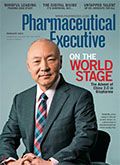Country Report: Spain
Pharmaceutical Executive
With Spain now squarely on the road to economic recovery following the ravages of the global financial crisis, multinational pharmaceutical companies are seeing the country as a top-tier investment destination once more.
Maturing with Grace
With Spain now squarely on the road to economic recovery following the ravages of the global financial crisis, multinational pharmaceutical companies are seeing the country as a top-tier investment destination once more thanks to a much improved market access scenario, high quality but affordable manufacturing capabilities, and an enviable clinical research base. Gone are many of the forced price reductions and ejections from the reimbursement list that coincided with the implementation of successive austerity programs. Instead, Spain today stands proud as the tenth-largest pharma market in the world, with a valuation of EUR 26.15 billion (USD 29.55 billion) in 2017, according to BMI.
“Overall the Spanish life sciences sector has exhibited great resilience, having initially endured quite a hammering: for the past three years, the overall value of pharmaceutical sales in the hospital segment expanded at a rate of 3.3% while retail sales increased 2.2%... I genuinely cannot think of any other European market that has enjoyed an analogous growth trajectory,” concedes Humberto Arnés, the director general of Farmaindustria, Spain’s leading pharmaceutical industry association.
A visible improvement to the market access context has naturally been a decisive factor in this turnaround in investor confidence. “In addition to market growth, two other important indicators reflect positive change: product availability and the timeframe taken for a product approved by the EMA to reach the Spanish market,” explains Arnés. “We had dramatically dropped behind for both indicators during the crisis, but are thankfully now back in line with markets such as Italy, France, and Germany.”
To view the full article on Spain's pharmaceutical and healthcare markets, produced by Focus Reports and featured in Pharm Exec's February 2019 issue, click
here(cycle down to page 24).
To preview and purchase other in-depth global Phama Reports, highlighting several countries and emerging markets, please visit www.industrymatter.com/reports

Navigating Distrust: Pharma in the Age of Social Media
February 18th 2025Ian Baer, Founder and CEO of Sooth, discusses how the growing distrust in social media will impact industry marketing strategies and the relationships between pharmaceutical companies and the patients they aim to serve. He also explains dark social, how to combat misinformation, closing the trust gap, and more.